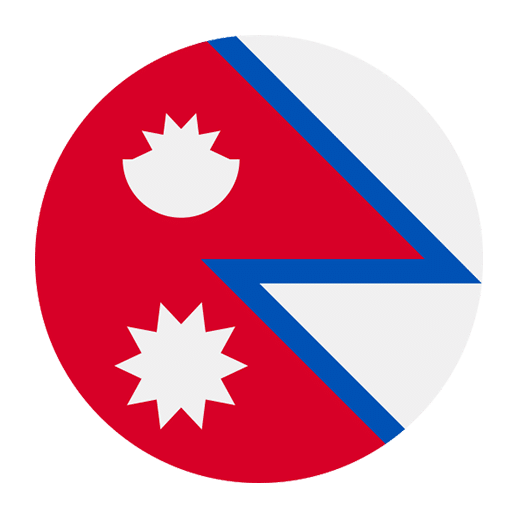Nepali, the official language of Nepal, is a rich and vibrant language that belongs to the Indo-Aryan branch of the Indo-European language family. Spoken by over 17 million people in Nepal and by Nepali communities in Bhutan, India, and around the world, Nepali is a fascinating language that offers a window into the culture, history, and traditions of the Himalayan region. For English speakers interested in learning Nepali, understanding its nuances and subtleties is crucial. This article delves into the linguistic features, grammar, vocabulary, pronunciation, and cultural elements that make Nepali a unique and rewarding language to study.
Historical and Linguistic Background
Nepali, historically known as Gorkhali or Khaskura, has its roots in the ancient Sanskrit language. It evolved from the Prakrit languages spoken in the region and was influenced by Tibeto-Burman languages due to the geographical proximity and cultural exchanges. The modern Nepali script, Devanagari, is also used for Hindi, Marathi, and Sanskrit, providing a common thread among these languages.
Evolution of Nepali
The evolution of Nepali can be traced back to the ancient Khasa kingdom, where it was spoken by the ruling clans. Over centuries, Nepali absorbed influences from neighboring languages and cultures, including Tibetan, Newari, and Maithili. The unification of Nepal in the 18th century under King Prithvi Narayan Shah established Nepali as the lingua franca, solidifying its status as the national language.
Phonetics and Pronunciation
One of the first challenges English speakers encounter when learning Nepali is its phonetics and pronunciation. Nepali has a rich set of phonemes, including several that do not exist in English.
Vowels and Consonants
Nepali has 11 vowels and 33 consonants. The vowels are categorized into short and long forms, similar to other Indo-Aryan languages. Consonants are divided into five groups based on their place of articulation: guttural, palatal, retroflex, dental, and labial.
Vowels:
– Short vowels: अ (a), इ (i), उ (u), ऋ (ri)
– Long vowels: आ (aa), ई (ii), ऊ (uu), ए (e), ऐ (ai), ओ (o), औ (au)
Consonants:
– क (ka), ख (kha), ग (ga), घ (gha), ङ (nga)
– च (cha), छ (chha), ज (ja), झ (jha), ञ (nya)
– ट (ṭa), ठ (ṭha), ड (ḍa), ढ (ḍha), ण (ṇa)
– त (ta), थ (tha), द (da), ध (dha), न (na)
– प (pa), फ (pha), ब (ba), भ (bha), म (ma)
– य (ya), र (ra), ल (la), व (va)
– श (sha), ष (ṣa), स (sa), ह (ha)
Tone and Stress
Unlike English, Nepali does not use stress to distinguish meaning. Instead, it relies on pitch and intonation. However, correct pronunciation of vowels and consonants is crucial, as slight variations can change the meaning of words. For example, “bāṭo” (road) and “bato” (rice plant) differ only in the length of the vowel.
Grammar and Sentence Structure
Nepali grammar, while sharing similarities with other Indo-Aryan languages, has its own unique characteristics. Understanding its sentence structure, verb conjugations, and use of particles is essential for mastering the language.
Sentence Structure
Nepali follows a Subject-Object-Verb (SOV) word order, unlike the Subject-Verb-Object (SVO) order in English. For example:
– English: I eat an apple.
– Nepali: म स्याउ खान्छु (ma syāu khānchu) – I apple eat.
Verb Conjugation
Verb conjugation in Nepali is influenced by tense, aspect, mood, and the subject’s gender and number. There are three primary tenses: past, present, and future, each with simple, continuous, and perfect aspects.
Present Tense:
– Simple: म खान्छु (ma khānchu) – I eat.
– Continuous: म खाइरहेको छु (ma khāiraheko chu) – I am eating.
– Perfect: मैले खाएको छु (mailē khāeko chu) – I have eaten.
Past Tense:
– Simple: मैले खाएँ (mailē khāẽ) – I ate.
– Continuous: म खाइरहेको थिएँ (ma khāiraheko thieõ) – I was eating.
– Perfect: मैले खाएको थिएँ (mailē khāeko thieõ) – I had eaten.
Future Tense:
– Simple: म खानेछु (ma khānechu) – I will eat.
– Continuous: म खाइरहेको हुनेछु (ma khāiraheko honechu) – I will be eating.
– Perfect: मैले खाएको हुनेछु (mailē khāeko honechu) – I will have eaten.
Particles and Postpositions
Nepali uses particles and postpositions instead of prepositions. These elements follow the noun or pronoun they relate to, providing information about time, place, direction, and more.
Examples:
– को (ko) – of (possessive)
– मा (mā) – in, at
– बाट (bāṭa) – from
– संग (sanga) – with
– लाई (lāi) – to, for
Vocabulary and Expressions
Building a robust vocabulary is fundamental to language learning. Nepali vocabulary is a blend of native words and loanwords from Sanskrit, Hindi, English, and other languages. Familiarity with common phrases and expressions can significantly enhance communication skills.
Common Phrases
– नमस्ते (Namastē) – Hello
– धन्यवाद (Dhanyavād) – Thank you
– कृपया (Kripayā) – Please
– माफ गर्नुहोस् (Māf garnuhos) – Sorry/Excuse me
– तपाईँको नाम के हो? (Tapāīm̐ko nām ke ho?) – What is your name?
– म ठीक छु (Ma ṭhīk chu) – I am fine.
Loanwords and Code-Switching
Nepali has incorporated numerous loanwords from English, especially in urban areas and among the younger generation. Code-switching between Nepali and English is common in informal conversations.
Examples:
– मोबाइल (mobāil) – Mobile phone
– कम्प्युटर (kampyūṭar) – Computer
– स्कूल (skūl) – School
– ट्रेन (ṭrēn) – Train
Dialects and Regional Variations
Nepali is not monolithic; it has several dialects influenced by geographical, ethnic, and social factors. Understanding these variations can provide deeper insights into the language’s diversity.
Major Dialects
– Eastern Nepali: Spoken in the eastern regions of Nepal, it has distinct phonological and lexical features.
– Western Nepali: Predominant in the western parts of Nepal, it includes unique vocabulary and pronunciation.
– Central Nepali: The standard dialect, used in media, education, and official communication, is based on the speech of the Kathmandu Valley.
Influence of Ethnic Languages
Nepal is home to over 120 ethnic groups, each with its own language or dialect. These languages often influence the local variety of Nepali, resulting in a rich tapestry of linguistic diversity.
Cultural Context and Idiomatic Expressions
Language and culture are deeply intertwined. Understanding the cultural context and idiomatic expressions is essential for effective communication and appreciation of the Nepali language.
Proverbs and Idioms
Nepali is replete with proverbs and idiomatic expressions that reflect the wisdom, humor, and worldview of its speakers. These expressions often do not translate literally and require cultural insight to be fully understood.
Examples:
– हात्ती आयो हात्ती आयो फुस्सा (Hāttī āyo hāttī āyo phussā) – Much ado about nothing. (Literal: The elephant came, but it was a false alarm.)
– घरको बाघ, बनको स्याल (Gharko bāgha, banko syāl) – A person who is brave at home but cowardly outside. (Literal: Tiger at home, fox in the forest.)
Politeness and Honorifics
Politeness and respect are integral to Nepali culture, and the language reflects this through various honorifics and polite forms. Addressing elders, strangers, and people of higher social status requires the use of respectful language.
Examples:
– तपाईँ (Tapāīm̐) – You (formal)
– हजुर (Hajur) – Yes (respectful), also used to address elders or show respect.
– दिनुहोस् (Dinu hos) – Please give (polite form)
Learning Resources and Strategies
With the advent of technology, numerous resources are available for learning Nepali. Combining these resources with effective learning strategies can accelerate the acquisition of language skills.
Online Resources
– Language Learning Apps: Duolingo, Memrise, and Drops offer Nepali courses that cover vocabulary, grammar, and basic conversational skills.
– Online Dictionaries: Sites like MeroNepal.com and NepaliLexicon.com provide comprehensive Nepali-English dictionaries.
– YouTube Channels: Channels like “Learn Nepali with Raj” and “NepaliClass101” offer video lessons on various aspects of the Nepali language.
Books and Textbooks
Several textbooks and phrasebooks are available for learners at different levels. Popular choices include “Teach Yourself Nepali” by Michael Hutt and Abhi Subedi, and “Colloquial Nepali” by H. S. Shrestha and M. Acharya.
Language Exchange and Immersion
Practicing with native speakers is invaluable. Language exchange platforms like Tandem and HelloTalk connect learners with native Nepali speakers. Additionally, immersion through travel or cultural exchange programs can provide firsthand experience and accelerate learning.
Conclusion
Understanding Nepali language and its subtleties is a journey that goes beyond mastering vocabulary and grammar. It involves appreciating the cultural, historical, and social contexts that shape the language. For English speakers, learning Nepali opens up a world of rich traditions, diverse communities, and profound wisdom. By embracing the linguistic features, phonetics, grammar, vocabulary, and cultural nuances discussed in this article, learners can embark on a rewarding path to fluency in Nepali. Whether through online resources, books, or immersive experiences, the key is consistent practice and a genuine interest in the language and its speakers. Happy learning!

